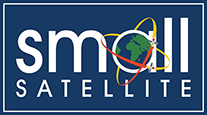Session
Session I: Advanced Technologies 1 - Research & Academia
Location
Salt Palace Convention Center, Salt Lake City, UT
Abstract
The proliferation of satellites and satellite constellations in orbit, combined with the rapid expansion of telecommunications and wireless “smart” devices on Earth, has led to congestion in the radio frequency spectrum, adversely affecting data transmission and security. Although technological advances in small satellite technology and new commercial models for rocket launches have lowered the barrier for accessing space, the licensing process to use radio frequencies for satellite communications remains an obstacle. Free Space Optical Communication (FSOC) using the near-infrared and visible parts of the unlicensed optical spectrum offers higher bandwidth, faster data rates, and improved security (near-IR). In 2024, the Naval Postgraduate School (NPS) launched Mola, a 6U CubeSat licensed on the Mobile CubeSat Command and Control (MC3) network of government ground stations. In addition to standard RF communications hardware, Mola contained an LED on-orbit payload (LOOP), a bank of nine ultra-bright green (527 nm) LEDs to allow visual observation of the satellite with a ground-based optical telescope. The United States Naval Academy (USNA) is a node on the MC3 ground station network and also maintains an optical observatory, which includes a 20-inch optical telescope and charged-couple device (CCD) astronomical camera housed in a fiberglass dome with an electric shutter and motor rotation. A series of joint NPS-USNA Mola-tracking observations were conducted over several months, starting in October 2024, using both the USNA MC3 ground station and optical telescope. Key features of the operations sessions included: optical tracking with and without simultaneous RF tracking; various camera exposure times (0.5s to 3s); optical tracking with LEDs off (sunlight reflection only), LEDs on, and LEDs blinking; broadband photometry measurements with ‘VR’ (visible), ‘g’ (green), ‘r’ (red) and ‘i’ (infrared) filters; and diffraction-grating spectroscopy to analyze satellite composition. Data captured during the observations include the brightness range in a visual band, the signal-to-noise ratio, field of view size, and pixel size. This paper outlines the details of low-Earth orbit (LEO) optical tracking, photometric data, and spectral analysis, including real-time ground observation of the optical tracks. The discussion highlights the ground-based optical and radio frequency (RF) hardware operated by undergraduate students, lessons learned, and future applications and implementations.
Document Type
Event
Optical Observation of MOLA CubeSat in Orbit Using Ground Telescope
Salt Palace Convention Center, Salt Lake City, UT
The proliferation of satellites and satellite constellations in orbit, combined with the rapid expansion of telecommunications and wireless “smart” devices on Earth, has led to congestion in the radio frequency spectrum, adversely affecting data transmission and security. Although technological advances in small satellite technology and new commercial models for rocket launches have lowered the barrier for accessing space, the licensing process to use radio frequencies for satellite communications remains an obstacle. Free Space Optical Communication (FSOC) using the near-infrared and visible parts of the unlicensed optical spectrum offers higher bandwidth, faster data rates, and improved security (near-IR). In 2024, the Naval Postgraduate School (NPS) launched Mola, a 6U CubeSat licensed on the Mobile CubeSat Command and Control (MC3) network of government ground stations. In addition to standard RF communications hardware, Mola contained an LED on-orbit payload (LOOP), a bank of nine ultra-bright green (527 nm) LEDs to allow visual observation of the satellite with a ground-based optical telescope. The United States Naval Academy (USNA) is a node on the MC3 ground station network and also maintains an optical observatory, which includes a 20-inch optical telescope and charged-couple device (CCD) astronomical camera housed in a fiberglass dome with an electric shutter and motor rotation. A series of joint NPS-USNA Mola-tracking observations were conducted over several months, starting in October 2024, using both the USNA MC3 ground station and optical telescope. Key features of the operations sessions included: optical tracking with and without simultaneous RF tracking; various camera exposure times (0.5s to 3s); optical tracking with LEDs off (sunlight reflection only), LEDs on, and LEDs blinking; broadband photometry measurements with ‘VR’ (visible), ‘g’ (green), ‘r’ (red) and ‘i’ (infrared) filters; and diffraction-grating spectroscopy to analyze satellite composition. Data captured during the observations include the brightness range in a visual band, the signal-to-noise ratio, field of view size, and pixel size. This paper outlines the details of low-Earth orbit (LEO) optical tracking, photometric data, and spectral analysis, including real-time ground observation of the optical tracks. The discussion highlights the ground-based optical and radio frequency (RF) hardware operated by undergraduate students, lessons learned, and future applications and implementations.


